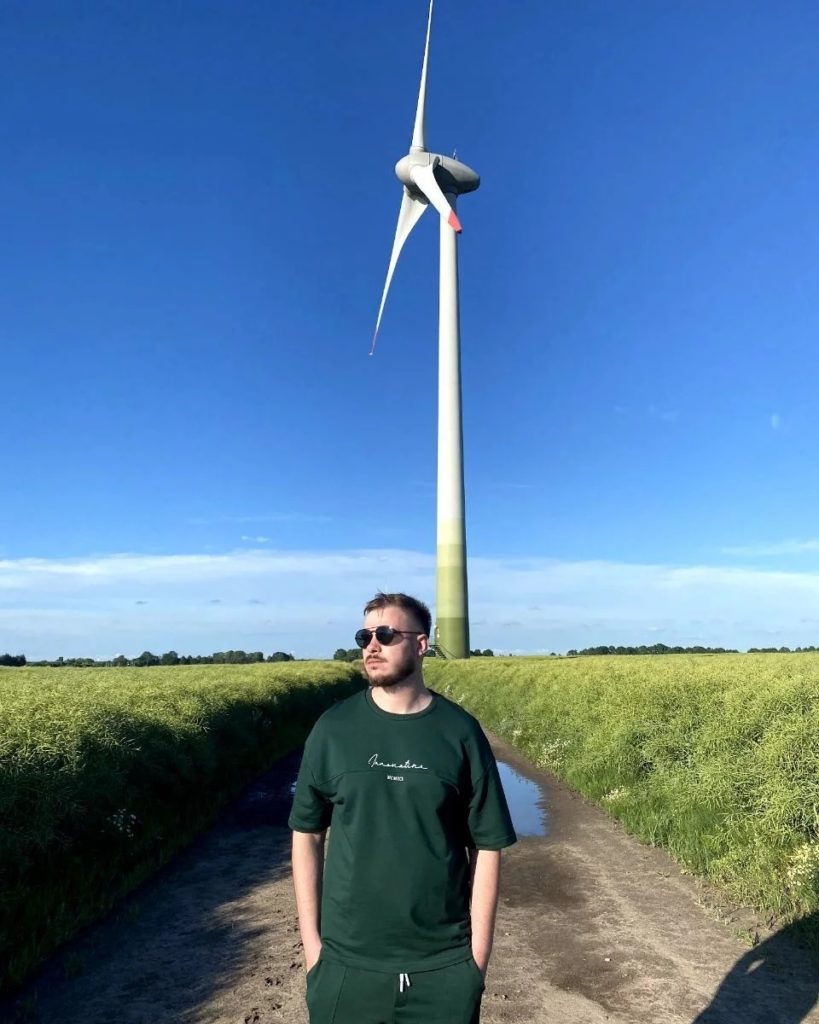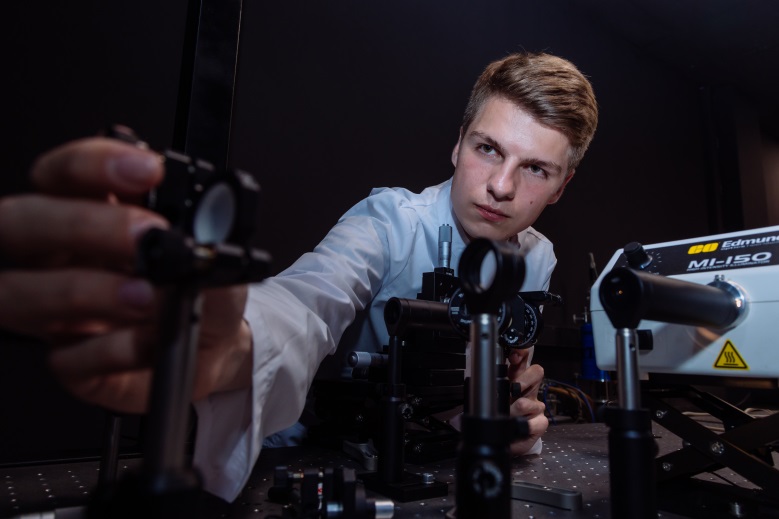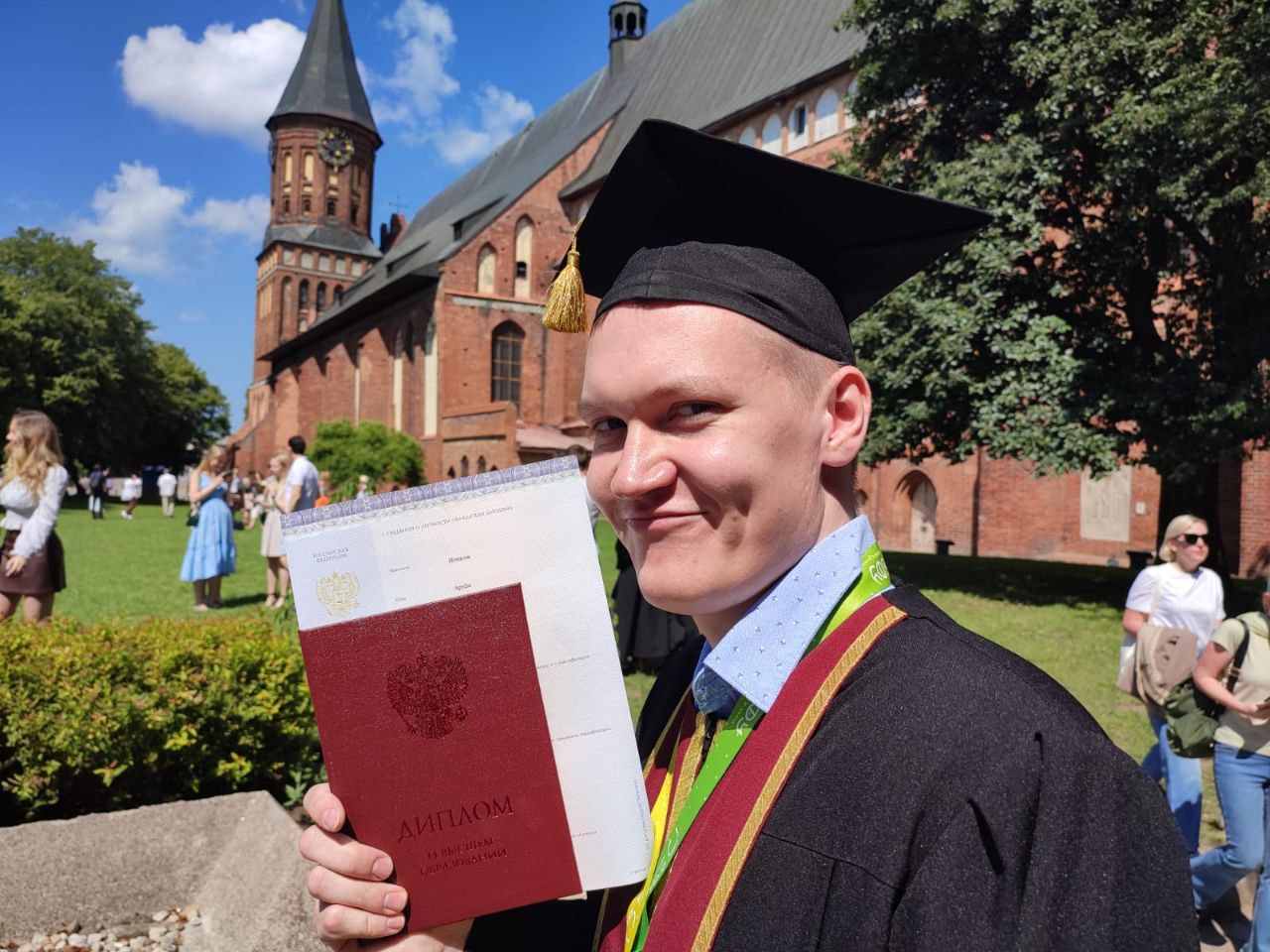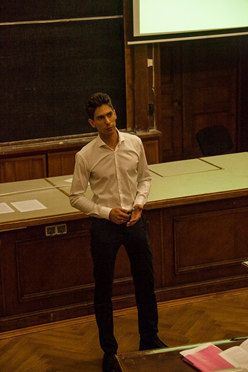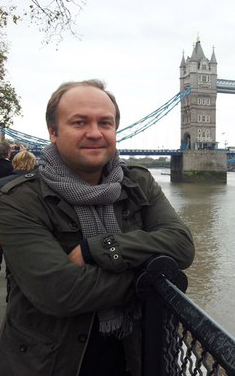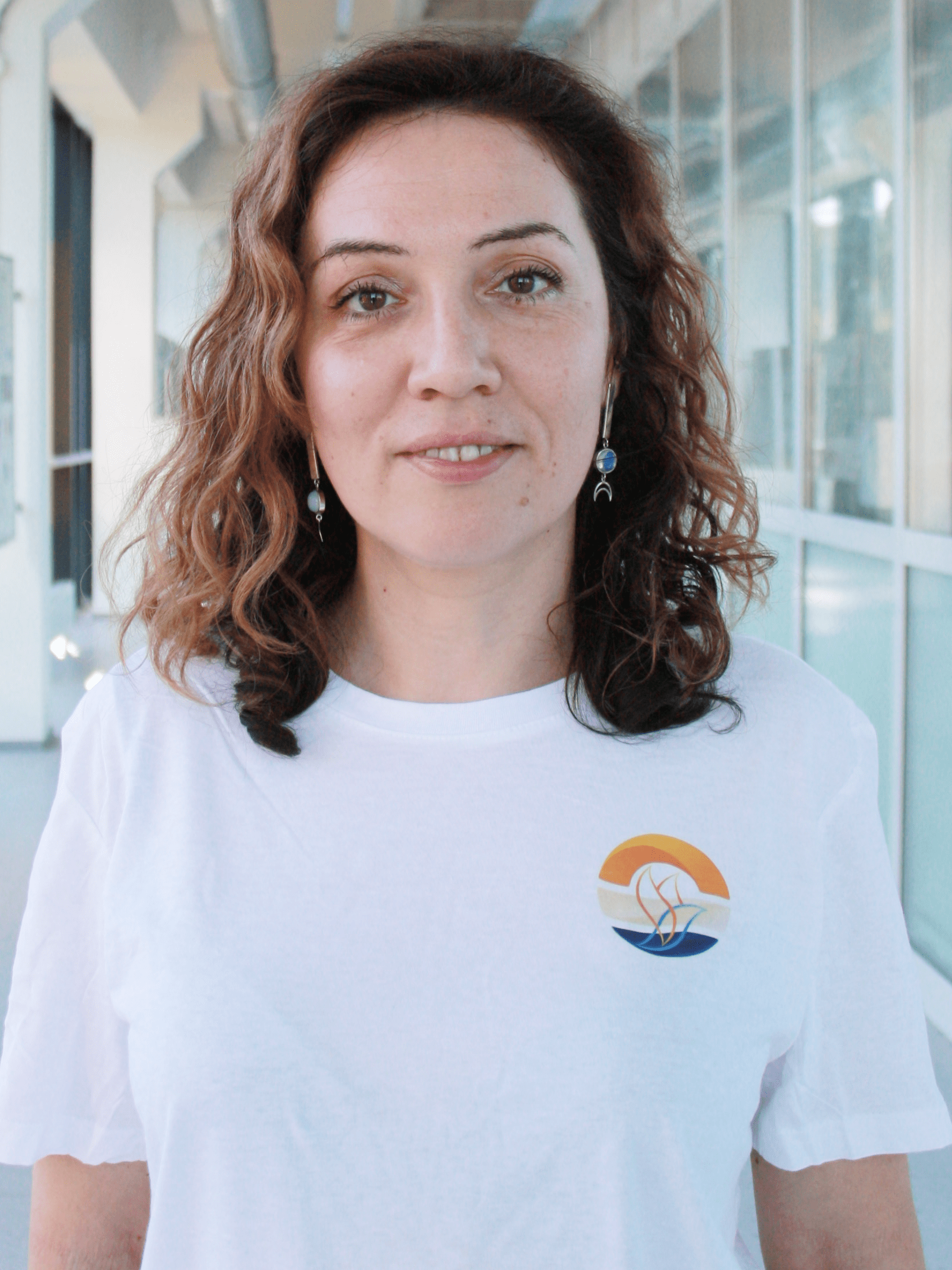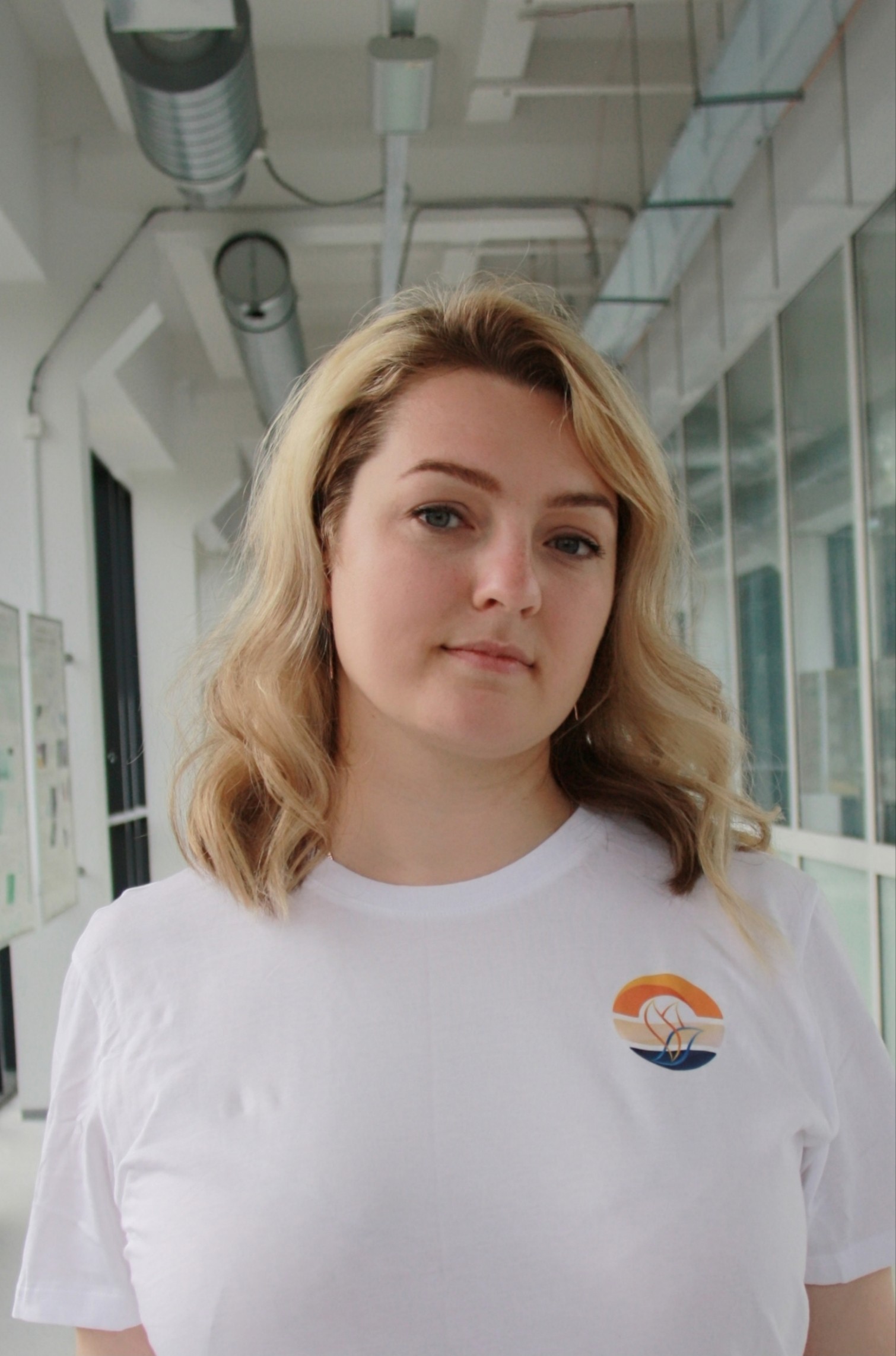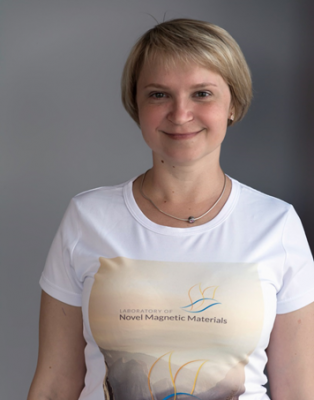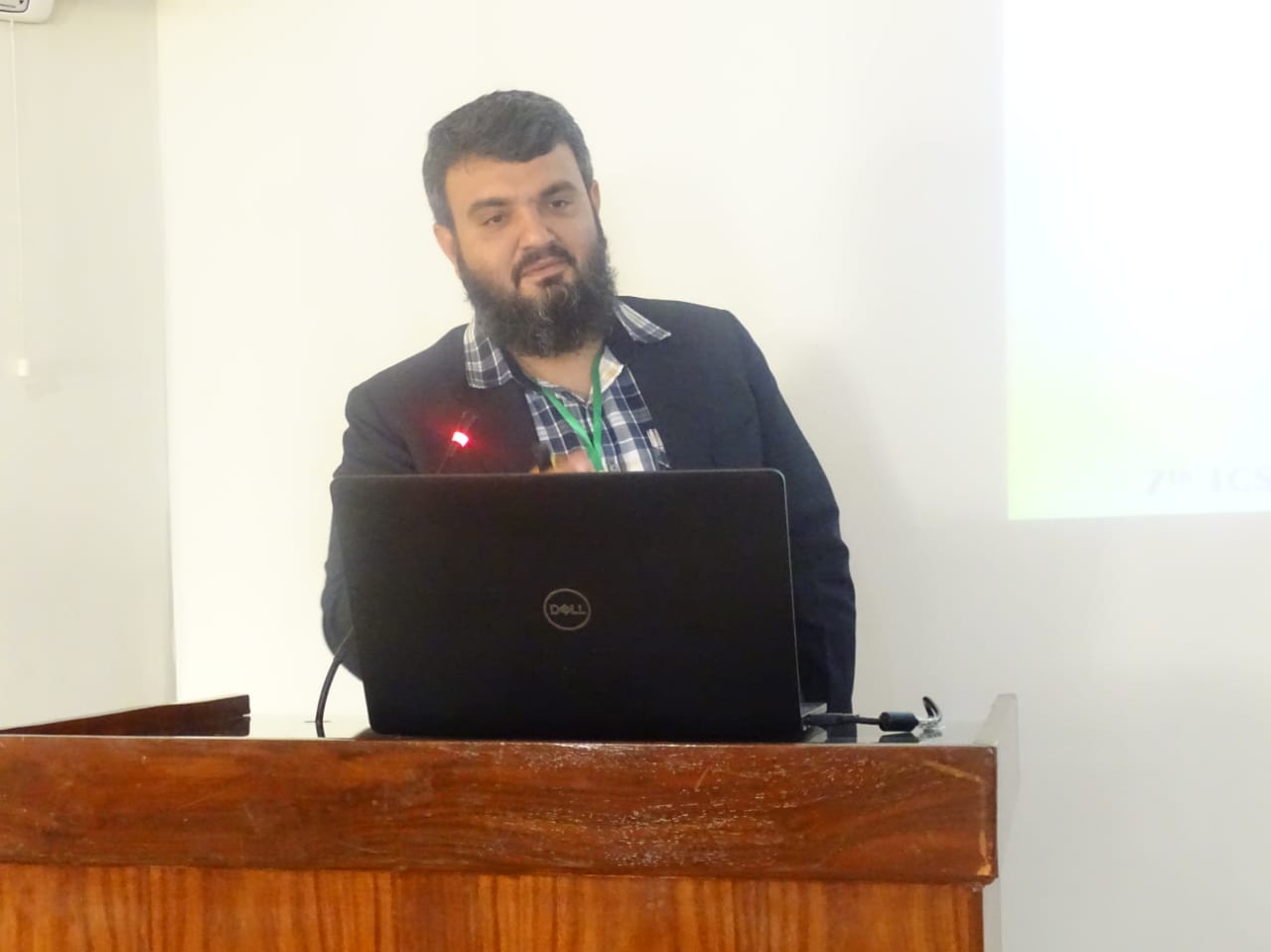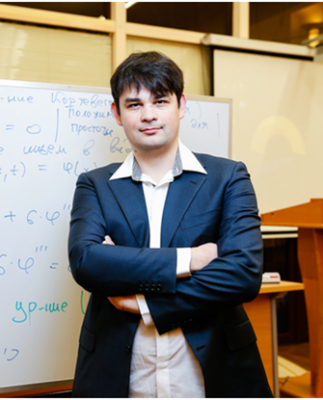Date: August 20-24, 2017
Svetlogorsk , Russia
Oral talk:
Magnetism of wires is relevant because of their specific geometry characterized by a cylindrical symmetry and large length to diameter aspect ratio. That implies a strong shape anisotropy which in addition to anisotropy contributions from crystal symmetry and magnetostrictive deformations confer them a unique magnetic behavior suitable for technological applications, particularly in sensor devices and actuators. Interest in recent years has been focused towards multilayer magnetic systems with high potential in magnetic recording and sensor devices (field, temperature or pressure sensors). These systems include a specific new type of bimagnetic phase microwires based on those glass-coated microwires where an external shell is electrodeposited [1].In this work, a family of core/shell bimagnetic microwires is introduced consisting of a cylindrical magnetic core covered by a concentric but asymmetric external shell fabricated by combined rapid solidification and sputtering techniques. The two magnetic phases are isolated by an intermediate glassy microtube and are designed to show differential soft/soft or soft/hard magnetic behavior. Particular attention is paid to Fe-based magnetically soft core covered by either magnetically ultrasoft FeNi or harder Co external shell. Bulk magnetic properties of each magnetic phase are analyzed by vibrating sample magnetometry, VSM, and compared to local surface hysteresis loops determined by magneto-optical Kerr effect, MOKE. The SEM images allows us to confirm the asymmetry of the shell. Moreover, a phenomenological model of the interaction between the shell and the core was obtained taking into account the magnetostatic and magnetoelastic energies. The results suggest for the possibility of creation the magnetic manipulator based on bimagnetic concentric core/shell microwires with asymmetric external shell [2].
The research was supported by Ministry of Education and Science of the Russian Federation in the framework of government assignment No 3.4168.2017/nH and the Regional Government of Madrid under NANOFRONTMAG-CM project (S2013/MIT-2850).
[1] J. Torrejon, G. Badini-Confalonieri, M. Vazquez, JAP 103, 07E712 (2008).
[2] Patent 300239362, M. Vazquez, R. Elkammouni, V. Rodionova, N. Perov, K. Chichay, I. Baraban.
Baraban I.1,2, Chichay K.1,2, Berganza E.2 , Perez R.2 , Rodionova V.1,2, Vazquez M.2
1 Laboratory of Noval Magnetic Materials, Immanuel Kant Baltic Federal University, 236041, Kaliningrad, Russia
2 Center for Functionalized Magnetic Materials (FunMagMa), Immanuel Kant Baltic Federal University, 236041, Kaliningrad, Russia
3 Institute of Materials Science of Madrid, CSIC. 28049 Madrid, Spain
Correspondence to: machay@lnmm.ru
Immanuel Kant Baltic Federal University,
Gaidara 6, Kaliningrad, Russia
Poster Presentations:
These investigations are applied for using of (R, Bi)3(Fe, M)5O12 thin films in development of method of magneto-optical eddy current introscopy, where they are used as eddy current magnetic field sensors. The problem is to select the optimal sensor, i.e. to choose the range of a number of magnetic parameters of film to make the visualization of defects be less energy-intensive, more contrastive and more sensitive and high resolving. Magneto-optical eddy current defectoscopy is an unconventional, but effective method of nondestructive testing of metal objects. A great advantage of the method is the possibility of obtaining visual images of defects in testing objects [1-2]. Meanwhile, in most known experiments, sufficient attention was not paid to the analysis of the properties of the garnet film.This work is devoted to investigation of magnetic properties of magneto-optical ferrite-garnet films. Single-crystal epitaxial films based on substituted bismuth ferrite-garnet with the general formula (R, Bi)3(Fe, M)5O12 with the type of magnetic crystallographic anisotropy “easy axis”. Crystallographic orientation of all samples was (111). These films were grown by liquid-phase epitaxy method on gadolinium-gallium garnet substrates. The series consists of nine films of thickness varied in the range from 1.9 to 7.2 p,m.
Previously, we measured some parameters that allowed us to select samples with different values: the anisotropy field from 500 to 3000 Oe, the period of the domain structure from 5.5 to 32 p,m, and the saturation field from 22 to 77 Oe.Magnetic properties of thin films were investigated with vibrating sample magnetometry by Lake Shore. Hysteresis loops were obtained at different angles between magnetic field and normal vector of film from out-of-plane geometry to in-plane in increments of 10 degrees. Then there were obtained angle dependences of saturation field and coercivity.These studies helped to obtain saturation magnetization values, which were used to calculate the uniaxial anisotropy constant. After the experiments on the magneto-optical defectoscope of the eddy current and the processing of a series of MO images, the correlation was made with all the obtained magneto-optical parameters.
This work was supported by the Development Program of the Federal State Autonomous Educational Institution of Higher Education “V.I. Vernadsky Crimean Federal University” for 2015-2024 in the framework of the implementation of academic mobility under the project of FSAEI HE ” V.I. Vernadsky CFU » « Academic Mobility Network «Academic Mobility of Young Scientists of Russia – AMYSR» to the Immanuel Kant Baltic Federal University.
[1] Zeng, X. Liu, A Y. Deng, L. Udpa, L. Xuan, W. Shih, G. Fitzpatrick, IEEE transactions on magnetics 42/11, 113737-3744 (2006).
[2] Uchanin, Technical Diagnostics andND testing 2, 3-12 (2006).
N.V. Lugovskoy a’*, V.N. Berzhansky a, Ch.A. Gritsenko b, V.V. Rodionova b
a V.I. Vernadsky Crimean Federal University, 295007, Vernadskogo Prospekt, 4, Simferopol, Republic of Crimea, Russia
b Center for Functionalized Magnetic Materials (FunMagMa), STP “Fabrika”, Immanuel Kant Baltic Federal University, 236004, Nevskogo 14, Kaliningrad, Russia
Correspondence to: lugovskoynv@cfuv.ru
Immanuel Kant Baltic Federal University,
Gaidara 6, Kaliningrad, Russia
Manganese oxide nanoparticles (MNOPs) [1], when dispersed in a water solution, show a magnetic behavior that drastically changes after an aging process. In this work, the variation in the magnetic properties has been correlated with the structural evolution of the nanoparticles: in particular, the as prepared Mn3O4/MnO core/shell system manifests a low temperature magnetization reversal that is strongly affected by the presence of the MnO shell and, in particular, by the existence of a frustrated interfacial region playing a key role in determining the low temperature irreversibility, the finite coercivity slightly above the Curie temperature of the Mn3O4 phase, and the horizontal displacement of the FC-hysteresis loop. On the other hand, the magnetic behavior of the aged system results dominated by the presence of Mn3O4 whose highly anisotropic character (i.e. high coercivity and high magnetization remanence) is attributed to the presence of a large fraction of surface spins. Such result is consistent with the structural evolution, from core/shell to hollow nanoparticles, as shown by TEM observation.
Figure 1. Field cooling (5T) hysteresis loops of the as-prepared and aged sample at 5K.
[1] B.H. McDonagh, G. Singh, S. Hak, S. Bandyopadhyay, I.L. Augestad, D. Peddis, I. Sandvig, A. Sandvig, W.R. Glomm, Small. 12, 301-306 (2016). doi:10.1002/smll.201502545.
A. Omelyanchika,b,G. Singh c, B.H. McDonagh d, V. Rodionova a,b, D. Fiorani b,f,D. Peddis f, S. Laureti f
a Immanuel Kant Baltic Federal University, 236041, Nevskogo 14, Kaliningrad, Russia
b Center for Functionalized Magnetic Materials (FunMagMa), Immanuel Kant Baltic Federal University, 236041, Kaliningrad, Russia
c Department of Materials Engineering, Norwegian University of Science and Technology (NTNU),7491, Trondheim, Norway
d Ugelstad Laboratory, Dept. Of Chemical Engineering, Norwegian University of Science and Technology (NTNU), 7491 Trondheim, Norway
f Istituto di Struttura della Materia – CNR, CNR, 00016, Monterotondo Stazione, Roma, Italy
Correspondence to: 9azazel@gmail.com
Immanuel Kant Baltic Federal University,
Nevskogo 14a, Kaliningrad, 236004, Russia.
Spinel ferrite nanoparticles (NPs) are object of increasing interest due to their technological applications in different fields, e.g. biomedicine, magnetic recording and catalysis [1]. Nanosized cobalt ferrite in mesoporous silica matrix (CoFe2O4//SiO2) nanocomposites with low wt% of magnetic phase (15 wt%) were synthesized by a sol-gel auto-combustion method involving metal nitrates, citric acid and tetraethoxysilane as precursors and treated afterwards at three different annealing temperatures 700, 800 and 900°C. The growth of particle sizes with the increase of annealing temperature was observed by Transmission Electron Microscopy (TEM).Magnetic properties were studied by SQUID magnetometer, Mossbauer spectroscopy and AC susceptibility measurements. The value of effective magnetic anisotropy constant (Keff) increases with the decrease of particle size, being two times higher than the bulk value for ~3 nm particles. This can be ascribed to the increase of surface component of anisotropy. Moreover, we observed a strong increase of Keff for particles with same size but annealed at different temperature (Figure 1). This can be related to difference in cationic distribution, beyond the effect of particle size. In fact single ion anisotropy for Co2+ located tetrahedral sites (4A2 crystal field ground energy term, -79×10 J/ion) is smaller compared to Co in octahedral sites (+850×10 ). This can induce anincrease of magnetocrystalline anisotropy related to the orbital contribution in the 4T1 ground energy term [2].
Figure 1. Size dependence of effective anisotropy constant.
[1] C. Cannas, A. Musinu, D. Peddis, G. Piccaluga, Chem. Mater. 18, 3835 (2006).
[2] C. Cannas, A. Musinu, G.Piccaluga, D.Fiorani, D. Peddis, H.K. Rasmussen, S. M0rup, J. Chem. Phys. 125, 164714 (2006).
A. Omelyanchika,b,G. Singh c, B.H. McDonagh d, V. Rodionova a,b, D. Fiorani b,f,D. Peddis f, S. Laureti f
a Immanuel Kant Baltic Federal University, 236041, Nevskogo 14, Kaliningrad, Russia
b Center for Functionalized Magnetic Materials (FunMagMa), Immanuel Kant Baltic Federal University, 236041, Kaliningrad, Russia
c Department of Materials Engineering, Norwegian University of Science and Technology (NTNU),7491, Trondheim, Norway
d Ugelstad Laboratory, Dept. Of Chemical Engineering, Norwegian University of Science and Technology (NTNU), 7491 Trondheim, Norway
f Istituto di Struttura della Materia – CNR, CNR, 00016, Monterotondo Stazione, Roma, Italy
Correspondence to: 9azazel@gmail.com
Immanuel Kant Baltic Federal University,
Nevskogo 14a, Kaliningrad, 236004, Russia.
Nowadays a study of synthesis methods and magnetic nanoparticles properties become one of most promising scientific field. Specifically prepared and functionalized nanoparticles can be useful in many different applications such as biomedicine, catalysis, energy storage etc. [1] Laser ablation is a method which can offer to synthesize many different types of particles out of same initial substance, for example core/shell nanoparticles or nonspherical shape nanoparticles [1]. Laser ablation is a complex physical and chemical processes – a removal (ablation) of the substance from the surface or volume of the solid target using a laser beam. In contrast to the chemical ways of synthesis, nanoparticles prepared by laser ablation consist only from the material of target and the liquid (without impurities).
In present work, we prepared the magnetic nanoparticles by laser ablation of a a-Fe target in an aqueous medium and in the isopropyl solution, using two different types of lasers (nanosecond and femtosecond) and different power of laser beam (15, 25 and 250 mJ). Pictures of fabricated samples were taking by SEM of FIB Carl ZEISS Crossbeam 540 (Fig.1.). The obtained nanoparticles have a spherical shape and a mean diameter of less than 100 nm, which is close to size indicates superparamagnetic state for FexOy. Magnetic measurements carried out by vibrating sample magnetometer 7404 System by LakeShore. For analysis of the magnetic properties, the hysteresis loops of each sample at room temperature, the low temperature dependence of magnetization in zero-field cooled and field cooled (ZFC/FC) protocols were measured. All samples show the ferromagnetic behavior, high saturation magnetization values (up to 39 emu/g) and enchanted coercivity (100-545 Oe) in comparison with bulk value. [1]
Figure 1. SEM Image of prepared samples.
[1] K.Y. Niu, J. Yang, S.A. Kulinich, J. Sun, H. Li, X.W. Du, J. Am. Chem. Soc. 132, 9814 (2010).
M.M. Nosan a,b, A.S.Omelyanchik a,b, I.G. Samusev b, N.M. Myslitskaya b, R.Y.Borkunov b, I.I. Lyatun a,b, V.V. Rodionova a,b
a Center for Functionalized Magnetic Materials (FunMagMa), Immanuel Kant Baltic Federal University, 236041, Nevskogo 14, Kaliningrad, Russia
b Institute of Physics, Mathematics and Information Technology, Immanuel Kant Baltic Federal University, 236041, Kaliningrad, Russia
Correspondence to: nosanmark@gmail.com
Immanuel Kant Baltic Federal University,
Gaidara 6, Kaliningrad, 236022, Russia
In recent years the magnetic compounds with significant magnetocaloric effect (MCE) near room temperature are intensively studied. Recently, among the promising materials for magnetic refrigeration, a considerable interest is attracted to the materials showing magnetostructural phase transitions with giant MCE.FeRh alloys are one of the perspective magnetocaloric materials for applications. Fe48Rh52 exhibits a giant negative MCE near room temperature, arising from a metamagnetic first-order transition near 315 K between antiferromagnetic (AFM) and ferromagnetic (FM) order. However, the broad hysteresis often associated with the transition is key drawbacks for applications. A dramatic degradation of MCE versus number of refrigeration cycles is obtained by recent direct measurements. The irreversibility of the MCE is associated with very broad or incomplete transitions. While the irreversibility and hysteresis losses in other caloric materials with first-order magnetic transitions have been reduced by doping or introducing porosity, such reductions have remained elusive in the case of FeRh.To achieve reversibility of the MCE in FeRh materials, the simple bilayer multiferroic composite with piezoelectric and magnetostrictive components were fabricated. Magnetoelectric sandwich consists of Fe48Rh52 alloy as a magnetic component and PbZr0.53Ti0.47O3 (PZT) piezoelectric with thicknesses about 0.2 mm. The magnetic, magnetocaloric and magnetoelectric (ME) properties of FeRh-PZT composite were performed around room temperature. M(T) curves were demonstrated typical for FeRh alloys behavior with metamagnetic transitions from AFM to FM state around T=315 K with hysteresis ~10 K. The MCE measurements were performed in two regimes: with 25 V switching across the thickness of the sample and when the voltage was switched off. MCE in «switch off» regime is demonstrated the typical for Fe48Rh52 alloy behavior – maximum of temperature change, AT, is observed near temperature of AFM-FM transition ~316 K in heating and ~311.5 K in cooling. The temperature dependencies of MCE are demonstrated the hysteresis with temperature width about 4 K. The voltage switching leads to the small decrease of the MCE value and the AFM-FM transition point shifting by ~3 K toward high temperatures. The width of the hysteresis of MCE is decreased in applied electric field down to 3 K from 4.5 K. ME output voltage exhibits the maximum near AFM-FM transition temperature in AC magnetic field with amplitude of 0.62 T and frequency of 3 Hz. The anomaly of the ME coefficient can be explained by magnetic field induced mechanical strain near AFM-FM transition temperature.These results can be used for control of magnetic properties, MCE through the electric field and frozen of the irreversibility of the MCE effect in caloric materials.
V.V. Rodionov a, A.A. Amirov a, A.M. Aliev b, V.V. Rodionova a
a Center for Functionalized Magnetic Materials (FunMagMa), Immanuel Kant Baltic Federal University, 236041 Kaliningrad, Russia
b Amirkhanov Institute of Physics Daghestan Scientific Center, Russian Academy of Sciences 367003 Makhachkala, Russia
Correspondence to: rodionov_vlad@mail.ru
Immanuel Kant Baltic Federal University,
Gaidara 6, Kaliningrad, 236022, Russia
Ni-Mn-Ga based Heusler alloys show a first-order reversible martensitic transformation (MT) from the high temperature cubic L21 phase (austenite) to the low temperature phase (martensite) with a lower symmetry, which can be induced by single or multiple effect of heating, stress or magnetic field.Here we report on MT in thin glass-coated Ni-Mn-Ga Heusler-type microwire prepared by Taylor-Ulitovsky technique. Microwires were annealed at 833 and 1000 K during 1 hour in vacuum with heating rate of 10 K/min, followed by furnace cooling. To separate the influence of glass coating (GC) on properties of the microwire it was etched in water diluted HF acid (25%).SEM images and X-Ray diffraction measurements reveal the presence of a small amount of martensitic phase in the core of the both annealed microwires together with the cubic L21 austenite (Fig. 1a-b). MT has been observed below the room temperature in the microwires annealed at 1000 K during 1 hour. No signs of MT were found in the microwires annealed at lower temperature of 833 K (Fig. 1c). Curie temperature showed strong dependence on annealing temperature and the presence of the GC. In addition, circular multi-domain structure, typical for amorphous GC microwires, was observed along the axis of the microwire, disappearing after GC removal (Fig. 1d).
Figure 1. a) SEM image of annealed microwire crosssection;
b) XRD made at room temperature;
c) M(T) dependences for GC microwires annealed at 833 and 1000 K (left) and for microwires with and without GC (right) with magnetic field of 500 Oe applied along the microwire axis;
d) MFM scan made at room temperature showing circular magnetic domain structure on the surface of GC microwire annealed at 833 K.
[1] S. Kaufmann, U.K. Rößler, O. Heczko, M. Wuttig, J. Buschbeck, L. Schultz, S. Fähler, Physical Review Letters, 104 (2010)145702.
Shevyrtalov a, A. Zhukov b,c,d, V. Zhukova b,c, I. Lyatun a, Rodionova a
a Center for Functionalized Magnetic Materials, Immanuel Kant Baltic Federal University, 236041, Kaliningrad, Russian Federation
b Dpto. de Física de Materiales, Fac. Qmmicas, UPV/EHU, 20018, San Sebastian, Spain
c Dpto. de Física Aplicada, EUPDS, UPV/EHU, 200018, San Sebastian, Spain
d IKERBASQUE, Basque Foundation for Science, 48011 Bilbao, Spain
Correspondence to: shevyrtalov@gmail.com
Immanuel Kant Baltic Federal University,
Gaidara 6, Kaliningrad, 236022, Russia
















